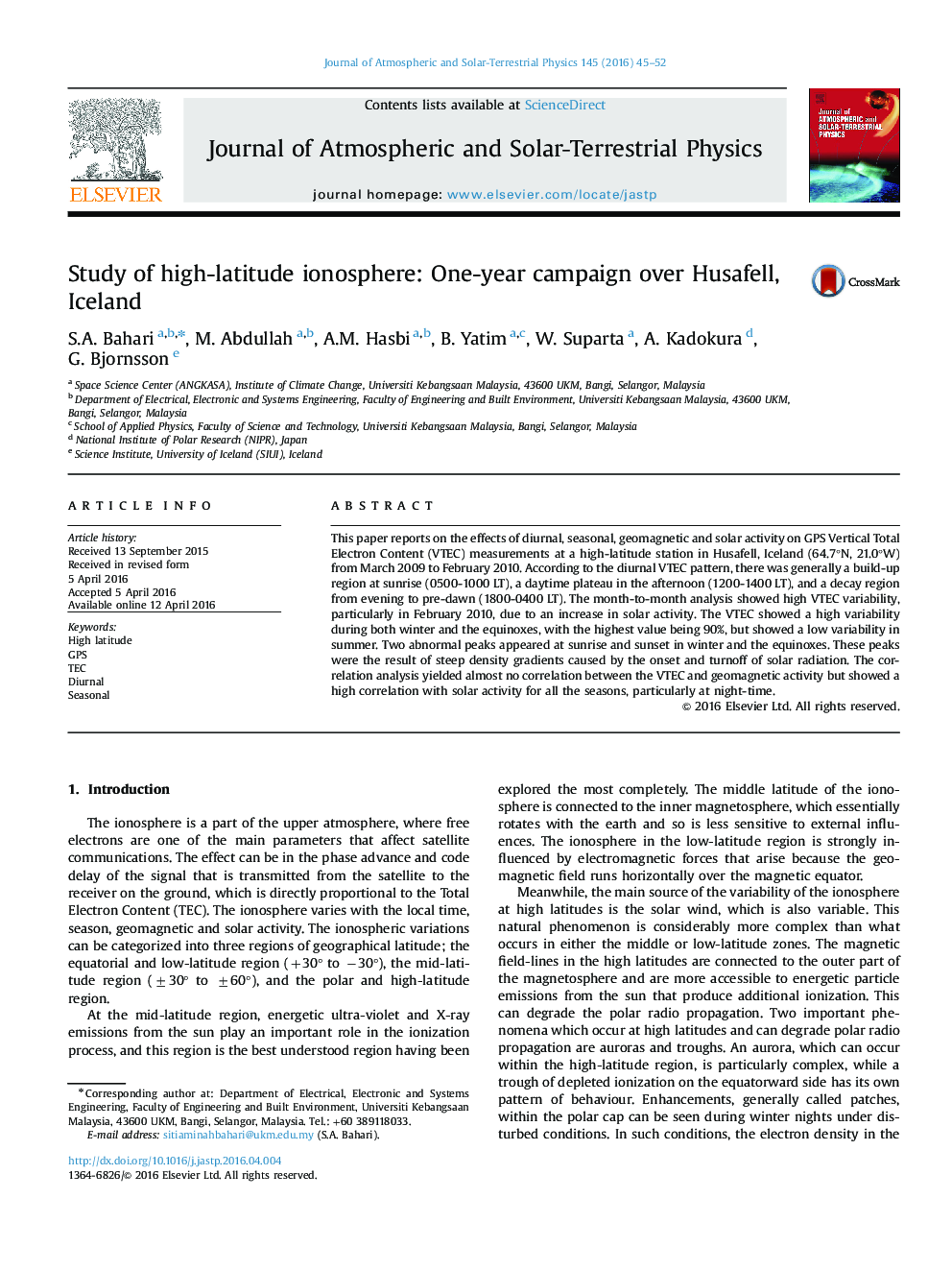| Article ID | Journal | Published Year | Pages | File Type |
|---|---|---|---|---|
| 1776221 | Journal of Atmospheric and Solar-Terrestrial Physics | 2016 | 8 Pages |
•One year data of VTEC at Husafell during low solar activity has been analysed.•The VTEC showed high variability with two abnormal peaks at sunrise and sunset times during both winter and equinoxes but showed low variability in summer.•The correlation analysis showed no dependence of VTEC on geomagnetic activity but large dependence of VTEC on solar activity for all seasons particularly nighttime.•Solar activity play a major role in influencing the variability of the ionosphere at Husafell.
This paper reports on the effects of diurnal, seasonal, geomagnetic and solar activity on GPS Vertical Total Electron Content (VTEC) measurements at a high-latitude station in Husafell, Iceland (64.7°N, 21.0°W) from March 2009 to February 2010. According to the diurnal VTEC pattern, there was generally a build-up region at sunrise (0500-1000 LT), a daytime plateau in the afternoon (1200-1400 LT), and a decay region from evening to pre-dawn (1800-0400 LT). The month-to-month analysis showed high VTEC variability, particularly in February 2010, due to an increase in solar activity. The VTEC showed a high variability during both winter and the equinoxes, with the highest value being 90%, but showed a low variability in summer. Two abnormal peaks appeared at sunrise and sunset in winter and the equinoxes. These peaks were the result of steep density gradients caused by the onset and turnoff of solar radiation. The correlation analysis yielded almost no correlation between the VTEC and geomagnetic activity but showed a high correlation with solar activity for all the seasons, particularly at night-time.
